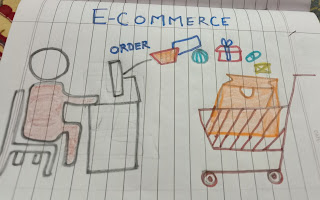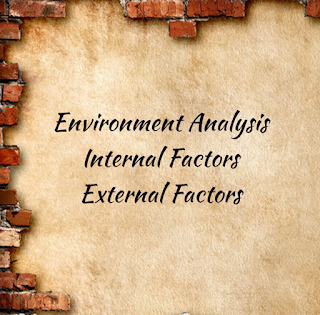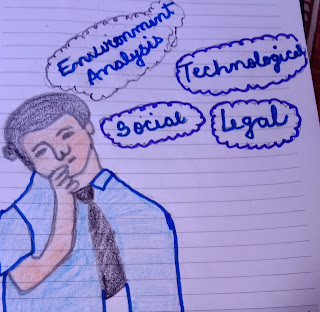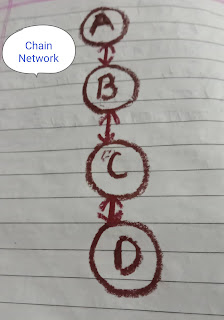By creating this blog ,I give short easy notes on Commerce subjects (Business studies, Economics,Accounts).
Sunday, 18 July 2021
E-commerce Business...
Wednesday, 7 July 2021
Job Enlargement &Job Enrichment..
Doing continously same job in a company employees become boredom and monotonous and it leads to increase in labour turnover and also employees are unhappy and demotivated .So in order to remove boredom and monotonous among employees towards their job manager follow these two techniques these are:-
Job Enlargement...
Points to be noted 📝📝..
Advantages of Job Enlargement...
Disadvantages of Job Enlargement...
Job Enrichment..
Points to be noted...
Advantages of Job Enrichment...
Disadvantages of Job Enrichment...
How can Job be Enriched?
Thus,Job Enlargement and Job Enrichment both are the techniques used to make job interesting reduce boredom and monotonous among employees towards his job but all the employees can not be happy they become frustrated due to heavy work load and demotivate towards his job, because all the employees are not same, some employees like challenging job ,high position ,more work etc but some employees not like challenging job , heavy work load they only want to complete their previously assigned work they don't like change.
Difference between Job Enlargement and Job Enrichment...
Wednesday, 30 June 2021
Manpower Planning...
What is Manpower Planning?
Manpower Planning is also known as human resource planning.Manpower planning is a planning of man (human resources) required in future.Manpower planning is a process in which quality and quantity of manpower required in future.
Manpower Planning is planning in advance how much manpower will required in future and what will be their skill is decided.Manpower planning is also known as personnel planning,human resource planning.
Manpower planning is a process of forecasting the organisation future needs for human resources so that human resources available at right time at right place when they are needed.
 |
| Manpower Planning |
Manpower Planning is compulsory for?
Manpower Planning in education?
Objective of Manpower Planning...
👭 To determine the exact quality & quantity of human resources will require in future.
👭There is no shortage & excess of human resources in future.
👭 Manpower is available at right time.
👭To anticipate the manpower for execute future expansion plans.
👭To improve the knowledge, skills ability of manpower according to organisation needs.
👭To use human resources efficiently and effectively.
Manpower Planning consider the following questions...
5)How can we keep our efficient employees for future?
What are the components of Manpower Planning?
Tuesday, 22 June 2021
Organisational Change..
What is Organisational Change?
Change is to modify in present condition due to situations or environment.
Organisational Change is change in organisation due to its environment.Change is very important & compulsory for every organisation.Change is inseparable in the life of organisation because in today's business are fastly changing due to its internal and external environment.Evey organisation should change his organisation according to its environment.Because today every organisation facing dynamic and changing business environment,there is no other alternative except to change his organisation.Organisation which cope up according to his changing environment get success and reach the top .
Internal factors affects changes due to following reasons:-
1)Due to change in his personnel brings changes in organisation like promotion,transfer, retirement, resignation.
2) Change in management also brings changes in organisation ,new management make change in policies, rules, working methods.
3) Organisation change also takes place due to change in work in nature.
4) Organisation change also takes place when demand of changes arises within organisation.
External Factors affects changes due to these reasons:-
External Factors are those factors which directly and indirectly affects the working of business.So every organisation continuously analysis the environment and make changes according to it .
1) Political & Legal environment-Political environment leads necessary change in organisation.Political party in power affect the business system.Business laws, industrial, economic and corporate laws made and amended by the Government time to time, according to that laws organisations also makes changes in its behaviour and business policies.
2) Technological environment-Today revolutionary changes takes place in technology.Modern technology use of new techniques makes work easy in organisation.
3) Economic Environment-Economic Environment also brings changes in organisation.Inflation , deflation, recession,boom brings changes in cost of materials, infrastructure facilities.
4) Social and Cultural conditions-Social and cultural brings changes in organisation like social values,customs , tradition, festivals, living standard etc affects organisation.
Changes are two types:-
Process of Planned change..
In business we can get success when every work is performed in planned and systematic way .So Change is also performed in planned way .For makes changes every manager had to perform these functions and then follow the change process..
1)First manager had to see what are changes takes place in our products in market .
2)What the consumer like to buy his tastes, preferences,income level etc.
3)How much we should make changes in our products.
4) Available work force for making changes in product.
Process of Planned change..
1) Identify the forces of demanding change-The first & foremost step is to identify the forces which demand for the change.Forces are internal or external.Internal forces includes workers skill, demanding high salary,strike, labour problems cost of inputs etc demand for change in the organisation.
External Factors like Government policies,rules,lauching new technology,new product,tax policies, social customs, tradition, festivals living standard,labour laws etc
2) Identify the need of change within organisation-Second step is to identify the need of change within the organisation,it means identify the which things are required to be changed compulsory and which changes can be avoided.for this purpose manager consult the external consultant.
3) Recognising the problem-Next step is to diagnose the problem within organisation carefully.For this purpose data is collected and reason behind the problem and also problem solve measures also taken into consideration,it means what changes can solve the problem for eg problem is product sale decrease so that manager see the new product fashion run in the market so manager also make changes and decide to make product accordingly.
4) Planning the change-After make sure to change in the organisation he make plan for change for this purpose he make changes in organisation structure , authority, responsibility etc ,change in job qualifications,job training,job specification etc ..
5) Implement the Plan - After making plan for change manager implement the plan for change.For implementation the change plan manager has to pass through these stages..
1) Unfreeezing-Nobody like changes ,so for making changes in organisation manager has to motivate the employees for changes and prepare them for it ,So they willing and ready and accepting change.
2) Changing and moving-After prepare them for change plan is implement .After that changing and moving process begins it means manager give training to learn new pattern of behavior or experience for change for eg -New technology, methods etc.After giving training reward and punishment strategy is followed it means worker who work efficiently get reward otherwise get punishment.
6) Review and Feedback- After implement the change plan manager review the performance after change it means how much change is profitable for organisation . whether change in organisation is effective or not , whether it maximise profits or not then corrective actions is taken .
Points to be noted...
⭐ Organisation that learn and cope up with the changes in Environment will get success and earn more profits.
⭐ Organisation change is make alteration in present condition due to internal and external forces .
⭐ Change are of two types 1) Proactive 2) Reactive.
⭐Change is never ending process.
⭐Change is directive and participative.
Tuesday, 15 June 2021
Environment Analysis..
Environment Analysis...
Thursday, 3 June 2021
"Scarce goods attract prices"
"Scarce good attract prices"
Scarce goods are those goods whose supply is limited and demand is very high , consumer have to pay more money to get them."Scarce goods attract price " due to these reasons:-
😊 Production of scarce goods are limited.
😊 Demand is very high.
😊 Distribution system is poor.
Scarce goods like coal,water, fresh air is produced in limited quantity, oxygen etc.
1) Country exports resources to other countries to earn foreign currency so there is scarcity arises in our country.
2) Highly increase in population but our resources are limited to fulfill the needs of people,so there is scarcity arises.
3)Air is available abundantly but fresh air is scarce due to population.
4)At the time of pandemic (Corona virus) there is shortage of oxygen, demand of oxygen is everywhere so oxygen is scarce,so oxygen is provided at very high prices.
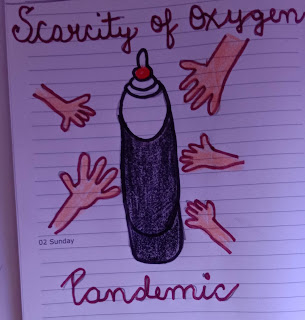 |
5)Poor distribution of resources also arise scarcity of resources.Due to poor distribution traders hide resources to create artificial scarcity and charge high prices.
6)At the time of pandemic Corona vaccine is not enough for each individual to be vaccinated this is scarcity.
7) Depletion of forest arise the scarcity of wood in order to built new houses furniture.
8) Wastage of water unnecessary or increase in population there is scarcity of pure water arises.
9)Land is scarce because this is available in limited quantity so land have very high prices.
10) Labour is available abundantly but skillfully,educated labour is limited,so labour is scarce.
Due to highly increasing in population resources are depleted fastly and trees cut so there is scarcity arises due to limited quantity because scarce resources cannot fulfill the needs of all the people So "Scarce goods attract price".
"दुर्लभ वस्तुएं कीमतों को आकर्षित करती हैं"
Tuesday, 9 March 2021
Techniques of planning..
Planning is decided in advance what is to be done in future.In planning management doing overall planning for eg- how much raw material is required,how much capital is required,how much labour is required etc.. For doing planning manager use planning techniques these are...
1) Forecasting.
2) Budgets.
3) Break- Even Analysis.
4) Linear Programming.
5) Waiting line.
6) Network techniques: PERT/CPM.
7) Theory of Probability.
 |
| Techniques of planning |
Techniques of planning..
1) Forecasting -Forecasting is predicts the future events in present.It is the most important technique of planning, through forecasting we predicts the future.Manager predicts what is likely to be happen in future,so they will prepare according to that and make plan accordingly.
1)To find out the cost of offering the service.
2) To find out the cost incurred due to delay in offering the service
3)To allocate the resources.
6) Theory of Probability-Theory of probability also helps in planning and decision making.Through this techniques managers use statistics to know the probability of risk in future plan and according to that probability make pattern of future plan.
Read this article of Planning..
https://commerceclasses86.blogspot.com/2020/08/financial-planning.html
https://commerceclasses86.blogspot.com/2020/05/planning-process.html
https://commerceclasses86.blogspot.com/2020/05/business-planning.html
Tuesday, 16 February 2021
Communication Network techniques..
Communication Network techniques
Communication Network means pattern of communication which exists in organisation, pattern of communication depends upon need of organisation & attitude of superior towards subordinates.
Commerce Subjects
What are the Main Factors that Influence Working Capital?..
Working Capital Management... The Capital required to meet day to day expenses of a business is termed as working capital.It comprises of t...

-
Financial Planning... Financial planning is deciding in advance how much capital should be required to run business and attaining g...
-
Social responsibility of business Concept of Social Responsibility... The concept of social responsibilities is fundamentally...
-
Business management Business Management... Management means to manage,it means manage the activities.Management is ...

